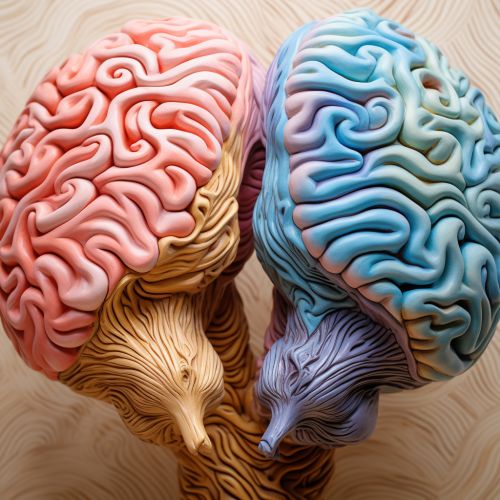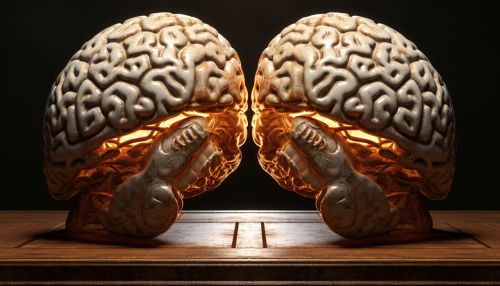Brain asymmetry
Overview
The human brain is a complex organ with a high degree of asymmetry, meaning that the two hemispheres of the brain are not identical and have different functions. This is known as brain asymmetry, a topic that has been extensively researched in the fields of neuroscience, psychology, and biology. Brain asymmetry is a fundamental aspect of human cognition and behavior, and it is also observed in other animal species.


Hemispheric Specialization
One of the most striking aspects of brain asymmetry is hemispheric specialization, also known as lateralization of brain function. This refers to the idea that one hemisphere has specialized functions or abilities that the other does not. The most well-known example of this is language processing, which is typically associated with the left hemisphere in right-handed individuals.
Left Hemisphere
The left hemisphere of the brain is often associated with logical thinking, including aspects of language such as grammar and vocabulary. It is also involved in mathematical abilities and fact retrieval. In addition to language, the left hemisphere controls the right side of the body and is more involved in tasks that require attention to detail and precision.
Right Hemisphere
The right hemisphere, on the other hand, is often associated with creative and intuitive thought processes. It plays a key role in spatial abilities, face recognition, visual imagery, and music appreciation. The right hemisphere controls the left side of the body and is more involved in tasks that require an understanding of the bigger picture or overall pattern.
Causes of Brain Asymmetry
The causes of brain asymmetry are not fully understood, but it is believed to be the result of a combination of genetic, environmental, and developmental factors. Some theories suggest that brain asymmetry is a result of the brain's adaptation to asymmetric body functions, while others propose that it is a by-product of brain development.
Genetic Factors
Several studies have suggested a genetic basis for brain asymmetry. For example, research has shown that left-handedness (which is often associated with a reversed pattern of brain asymmetry) tends to run in families. However, the specific genes involved in brain asymmetry have not been conclusively identified.
Environmental Factors
Environmental factors, such as the individual's experiences and interactions with their environment, can also influence brain asymmetry. For example, learning to read and write can enhance the asymmetry between the two hemispheres.
Developmental Factors
Brain asymmetry is also thought to be influenced by factors during development in the womb. For instance, the position of the fetus in the womb and the amount of exposure to certain hormones can affect the development of brain asymmetry.
Brain Asymmetry in Animals
Brain asymmetry is not unique to humans and has been observed in many other animal species, including birds, primates, and even invertebrates. This suggests that brain asymmetry has evolutionary advantages, such as enhancing cognitive capacity and efficiency.
Implications of Brain Asymmetry
Understanding brain asymmetry has important implications for various fields, including psychology, medicine, and education. For example, knowledge about brain asymmetry can help in the diagnosis and treatment of neurological disorders. It can also inform educational strategies, such as teaching methods that take into account the different cognitive styles associated with each hemisphere.
